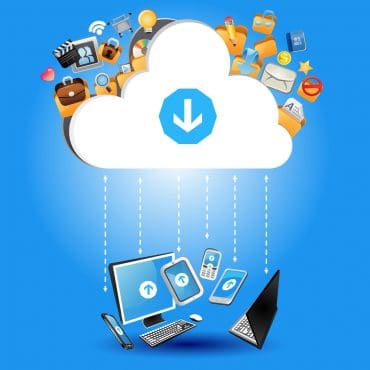
Using a microservices-based architecture offers the flexibility to add new data sources and use new analysis engines without rewriting entire applications.
Financial services organizations work in a field driven by fast-moving markets and conditions. They want to use real-time data to provide enhanced services to their customers, optimally hone offerings to individuals using dynamic scoring, prevent fraud, and meet ever-changing and more stringent regulatory requirements.
The most challenging aspect of modern financial services is that nothing is static. Organizations increasingly must bring new features and applications to market rapidly. At the same time, they want to make use of new data sources and the latest analytics technologies as they emerge. As such, most organizations have moved to a development approach based on microservices.
Microservices are independent processes that communicate with each other to accomplish a task within a much larger application. They help developers deliver new features more quickly and effectively than ever before.
Why is this capability needed? Such an architecture allows companies to make use of new or different data or technology more easily, as needed by the business. For instance, a business might need to use clickstream data in analytical systems for better customer service and personalization or bring in data on legacy systems using mainframe integration with change data capture (CDC).
A key element to many leading-edge applications is the ability to derive actionable information from new event data and data streams. For instance, an organization might want to adjust a credit scoring application by adding the pandemic’s impact into its calculations or using data that incorporates more granular regional variations.
In many cases, analysis of the events and streaming data requires more than traditional database and analytics technologies. A microservices-based development approach with a suitably selected streaming engine eliminates the problems by offering the flexibility to add new data sources and use new analysis engines without rewriting entire applications. If a streaming application is made up of microservices that work together, changes can be made to specific microservices elements without requiring changes to the rest of the application.
Microservices and Cloud-Native Deployments
The way to address common issues, incorporate streaming data, and enable flexible application development is to use an architecture based on loosely coupled microservices and middleware that lets the applications run in hybrid-cloud environments.
A cloud-native architecture based on microservices lets financial services businesses develop, deploy, move, and scale workloads to match an application’s requirements. Microservices-based, cloud-native architectures also let businesses modify part of an existing app (e.g., switch from one analytics technique to another or make use of a new data source) without modifying other parts of the app. Additionally, businesses can move particular parts of an app (such as the ingestion and streaming analytics engine) from on-premises to the cloud, or vice versa, depending on performance needs, costs, and the efficient use of resources.
Pulling Everything Together
Most companies use containers to develop and deploy microservices, and the tools and platforms for running containers to manage microservice-based applications. Containers offer a way for processes and applications to work independently, yet are bundled and run as a single, distributed system.
Those containers must be managed and scaled over time. Containers can use Kubernetes, an open-source platform to automate the deployment and management of containerized applications. Specifically, Kubernetes provides service discovery and load balancing, storage orchestration, self-healing, automated rollouts and rollbacks, and more.
The last factor is how to use a microservices approach and accommodate streaming data. That’s where Apache Kafka comes in. Apache Kafka is a distributed data streaming platform that can publish, subscribe to, store, and process streams of records in real time. It is designed to handle data streams from multiple sources and deliver them to multiple consumers.
Apache Kafka is an open-source alternative to a traditional enterprise messaging system. It supports a range of use cases where high throughput and scalability are vital. Apache Kafka minimizes the need for point-to-point integrations for data sharing, and it can reduce latency to milliseconds. So, data is available to users faster, which can be advantageous in cases requiring real-time data availability, such as financial services.
Partnering to Get the Most Out of Open Source
Many open-source solutions require features and capabilities to make them enterprise-ready. Given that most companies do not have extensive expertise in streaming and events data applications, teaming with a technology partner makes sense.
Red Hat is synonymous with open source for the enterprise. Red Hat AMQ Streams, based on the Apache Kafka project, offers a distributed backbone that allows microservices and other applications to share data with extremely high throughput and extremely low latency. AMQ Streams makes running and managing Apache Kafka a Kubernetes-native experience by additionally delivering Red Hat OpenShift Operators, a simplified and automated way to deploy, manage, upgrade, and configure a Kafka ecosystem installation on Kubernetes.
Read the other blog in this series:






